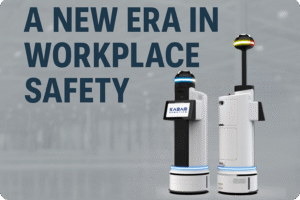Why Training Matters in a Robot-Integrated Workplace
Introducing robotic technology into your operations is more than just a hardware upgrade—it’s a cultural and workflow shift. Even the most advanced automation won’t deliver its full potential without people who understand, trust, and know how to work alongside it.
Without proper training, employees may feel uncertain or even resistant to the change. But with the right approach, staff become not just operators of new tools, but champions of innovation.
1. Start with Clear Communication
Before training begins, explain why robots are being introduced and how they’ll benefit both employees and the business.
-
Emphasize collaboration, not replacement: Position robots as tools that make work safer, easier, and more engaging.
-
Highlight benefits to staff: Less physical strain, fewer repetitive tasks, more time for customer-facing or creative work.
-
Set realistic expectations: Share what robots can—and can’t—do, so staff understand their role in the new workflow.
2. Design Hands-On Learning Experiences
People learn best by doing.
-
Live demonstrations: Show robots in action and walk employees through real-world tasks.
-
Small group sessions: Encourage interaction and questions in an intimate setting.
-
Practice time: Let staff operate robots under supervision until they feel comfortable and confident.
3. Create Tiered Training for Different Roles
Not everyone needs the same level of technical expertise.
-
Frontline users: Learn basic operation, troubleshooting, and safety protocols.
-
Supervisors: Understand robot scheduling, integration with existing processes, and performance tracking.
-
Technical staff: Receive in-depth training for maintenance, software updates, and diagnostics.
4. Address the Emotional Side of Change
Introducing new technology can be intimidating.
-
Acknowledge concerns: Let employees voice worries and answer them openly.
-
Share success stories: Highlight examples of staff thriving alongside automation.
-
Encourage peer support: Assign “robot ambassadors” within each team to help others adjust.
5. Make Training an Ongoing Process
Technology evolves, and so should training.
-
Refresher courses: Offer regular sessions to keep skills sharp.
-
Update materials: Add new features, tips, and best practices as robots evolve.
-
Collect feedback: Use employee input to fine-tune both the technology and the training program.
6. Celebrate Milestones and Success
Recognize teams for mastering new technology, improving efficiency, or finding innovative ways to collaborate with robots. This boosts morale and reinforces a positive mindset toward automation.
Final Thought
Robots can transform your operations—but only if your people are prepared, confident, and engaged. By investing in thoughtful, role-specific, and ongoing training programs, you turn apprehension into enthusiasm and change into opportunity.
When humans and robots work together seamlessly, your business doesn’t just keep up with change—it leads it.



